50 Well-Known “Facts” That Are Actually Just Common Myths

Sometimes it can be hard to separate fact from fiction, especially when so many of the “facts” we’ve spent our whole lives believing are actually enduring myths and misconceptions. These common myths seem true because we’ve heard them time and time again—we may have even learned them from our parents, or been taught them at school. Nevertheless, it’s more important than ever to call out the false facts that far too many people still believe, whether they’re related to our furry friends or the current pandemic. Read on to discover the truth behind some of the most persistent common myths. And for more recent myths to dispel, check out these 5 Dangerous Myths About the Coronavirus Vaccine You Need to Stop Believing.
1
Bulls get angry when they see the color red.

You’re hardly alone if you believe that when matadors wave those red capes to make bulls charge at them, it’s the bright color that incites their anger. But, according to the American Science Guide, bulls (like other cattle) are red-green colorblind. What actually triggers the bull’s anger is the movement of the cape. And for more trivia about creatures great and small, enjoy these 75 Animal Facts That Will Change the Way You View the Animal Kingdom.
2
Goldfish only have a three-second memory.
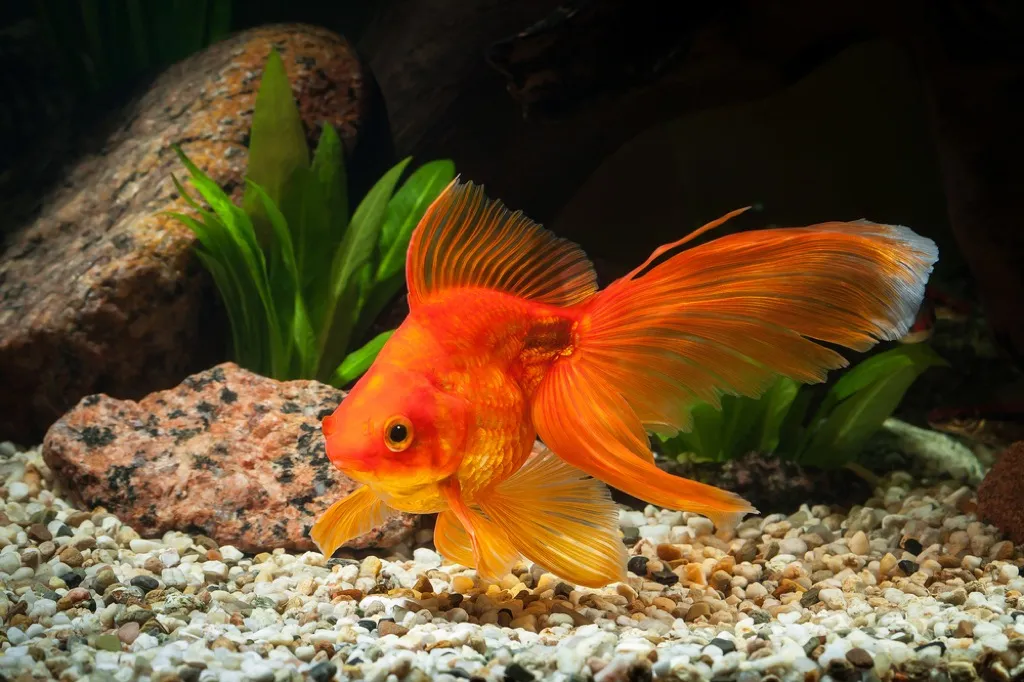
Goldfish have a reputation of having bad memories. But it turns out that the idea that these orange aquatic creatures can only remember things for three seconds is a myth. Not only has this false fact been debunked by several studies throughout the years—some research even indicates goldfish could have a memory span of up to five months long.
3
We only use 10 percent of our brains.

Many people believe that humans only use 10 percent of their brains; it’s even the plot line for the 2014 film Lucy, starring Scarlett Johansson. However, that’s nothing but a myth, neurologist Barry Gordon told Scientific American. He says that humans “use virtually every part of the brain” and most of the brain is “active almost all the time.” And for more misconceptions we can blame on movies, ditch these 17 Health Myths Perpetuated by Hollywood.
4
George Washington had wooden teeth.

It turns out our nation’s first president wasn’t rocking a pair of wooden chompers. The historians at the Washington Library say that while George Washington did suffer from dental problems, his dentures were composed of ivory, gold, lead, and even other human teeth—but never any wood. They believe that this common myth is the result of the ivory becoming stained over time, giving the fake teeth the appearance of wood.
5
Women accused of witchcraft were burned at the stake during the Salem Witch Trials.

According to History, most accused witches during the Salem Witch Trials of the late 17th century were hanged, while others died in jail waiting for their trials. The myth that they were burned at the stake is most likely due to the fact that during the Medieval witch trials in Europe, it was common practice to execute the accused by savagely setting them on fire. And to get rid of more historical misconceptions, learn which 23 Basic American History Questions Most Americans Get Wrong.
6
You need to drink at least eight glasses of water every day.

If you’re struggling to get to your eighth glass of water every day, don’t feel bad—the quota isn’t really a hard and fast rule for healthy living. According to the Mayo Clinic, the amount of water you need daily depends on several different factors, like your overall health, your activity levels, and where you live. No single number applies to humans across the board—some people may be perfectly hydrated with fewer than eight glasses and others might need more. And for more things you might be getting wrong about your body’s needs, check out these 25 Health Myths You Need To Stop Believing.
7
You’ll get cramps if you go swimming right after you eat.

Though it is a commonly held belief that your muscles will cramp should you swim right after eating, this just isn’t true (no matter how many times your parents said it was). Yes, the body requires extra blood in order to digest, but not nearly enough to prevent the muscles in your arms and legs from working as they should.
8
In the days of Christopher Columbus, everyone thought the world was flat.

Allegedly, around 500 B.C., the Ancient Greek philosopher Pythagoras was the first person to propose the theory that the Earth was flat. But not long thereafter, in the middle of the third century B.C., Aristotle declared with certainty that the Earth was, in fact, spherical. And though it might’ve taken a bit for everyone to come around to the reality that our planet is, well, round, Christopher Columbus wasn’t one of the naysayers. When he sailed the ocean blue in 1492, he knew Earth was a sphere. According to historian Jeffrey Burton Russell, “with extraordinary few exceptions no educated person in the history of Western Civilization from the third century B.C. onward believed that the Earth was flat.”
9
Dogs only see in black and white.

No, your pup isn’t seeing the world in black and white. Veterinarian Barbara Royal explained to HuffPost that dogs “don’t see all of the colors that we see, but they can actually distinguish between colors.” And for more up-to-date information, sign up for our daily newsletter.
10
Adding salt to water makes it boil faster.

The difference between boiling water with salt and boiling water without salt is negligible. As Middlebury College chemistry professor Lesley-Ann Giddings explained to LiveScience, “The temperature of saltwater will get hotter faster than that of pure water, but it still has a higher boiling point, and the mass is still greater when you add salt to the same volume of water. This doesn’t mean that the saltwater boils faster.”
11
It takes seven years for your body to digest gum.

You no long longer have to fret over that piece of gum you accidentally swallowed a couple years back. While it’s often been said that your body takes several years (seven is the number you’ve likely heard used most) to digest gum, that’s just a common myth. According to the Mayo Clinic, your body actually can’t digest gum at all, even in seven years. You see, gum doesn’t stay in your stomach—it just moves quickly through your digestive system and exits through your stool.
12
You swallow eight spiders a year while sleeping.
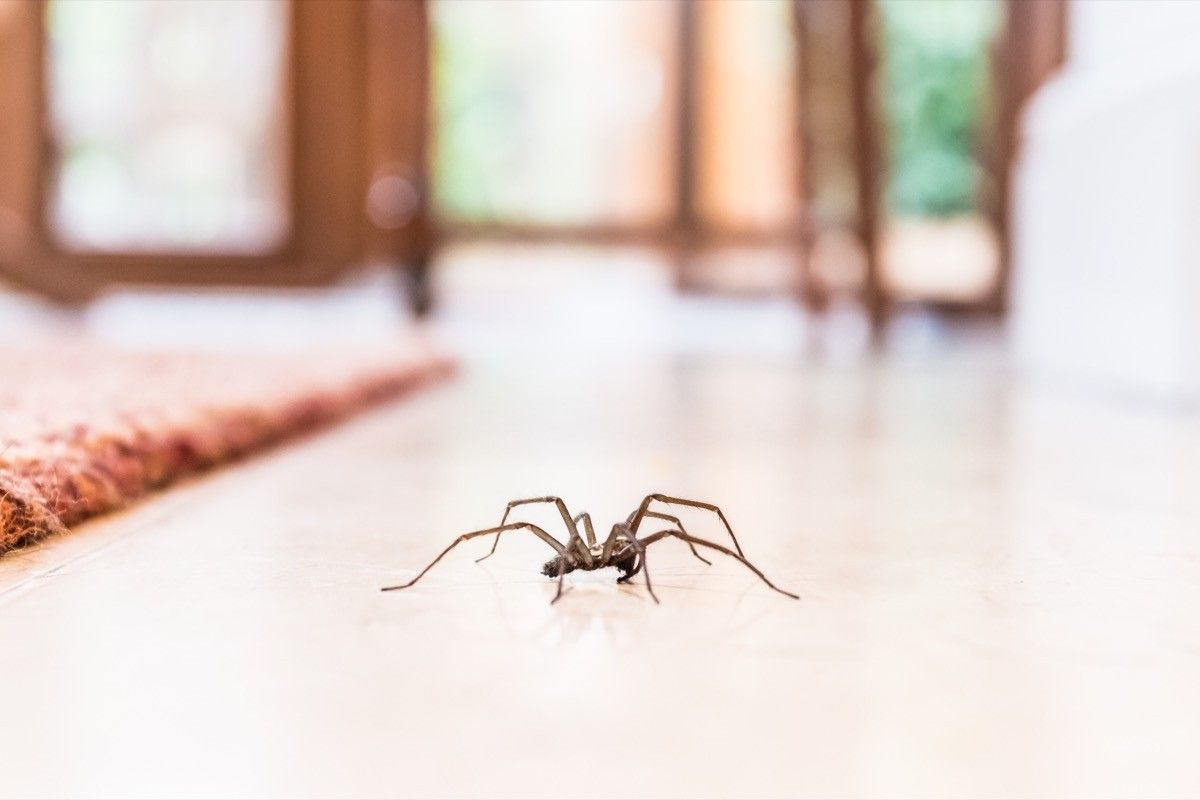
You don’t need to be an arachnophobe to be creeped out by the idea that you unknowingly swallow eight spiders in your sleep ever year on average. But fear no more, because there’s no truth to that notion. According to Scientific American, those eight-legged web-spinners don’t intentionally try to come into contact with humans, and the vibrations that come from a sleeping person would probably frighten a spider. So, while it’s plausible that you could swallow a spider in your sleep, it’s not likely, nor is there any factual evidence that you gulp down eight a year.
13
The Great Wall of China is the only man-made structure visible from space.

Many people have been told that the Great Wall of China is the only man-made structure visible from space, but that’s just not the case. According to Snopes, this false fact most likely developed as an attempt to convey the grand scale of the wall. From low space at 180 miles high, the Great Wall is not the only visible object, nor is it the most distinguishable. NASA images prove you can see “highways, airports, bridges, dams, and components of the Kennedy Space Center.” And if you go further into space, the wall can only be recognized in radar images, not with the human eye or even with a photograph.
14
Marie Antoinette said “let them eat cake” to spite the poor.

Marie Antoinette has long been a loathed symbol of royal decadence for replying to the news that French citizens had no bread in 1789 with the callous phrase, “Let them eat cake.” But historians aver that the Queen of France made no such comment.
As History reports, similar stories had gone around for years before the late 18th century, including one about Maria Theresa of Spain, who married King Louis XIV in 1660. She was accused of suggesting that the French people eat “la croûte de pâté” (the crust of the pâté).
Plus, the author of Marie Antoinette’s biography, Lady Antonia Fraser, says that it’s unlikely the quote came from the French queen, who was not only very charitable, but also had great compassion for the poor. For example, on the day of her husband’s coronation, she wrote to her mother: “In seeing the people who treat us so well despite their own misfortune, we are more obliged than ever to work hard for their happiness.”
15
Napoleon Bonaparte was extremely short.

Napoleon Bonaparte is often depicted as an aggressive man of unusually small stature, which is where the term “Napoleon complex”—used to describe men who overcompensate for their lack of height with aggression—comes from. However, Bonaparte was most likely average height at just over 5’5″ tall, History says. Historians suppose the myth that he was uncommonly small is derived from a series of caricatures of the general by British cartoonist James Gillray in the early 1800s.
16
A penny dropped from the top of the Empire State Building could kill someone.
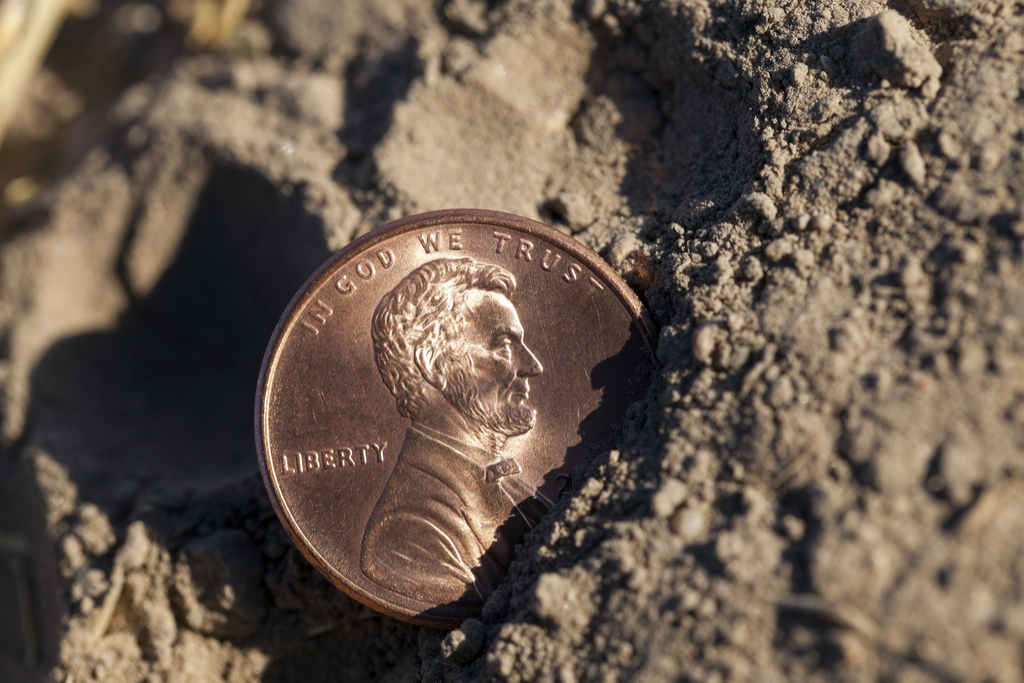
We’ve all heard this one before, but it’s just another myth to add to your list of fake facts. According to Scientific American, a penny is too small and flat for it to gain enough natural momentum to make any kind of fatal impact. At most, if you were hit, it might feel like being flicked in the forehead “but not even very hard,” Louis Bloomfield, a physicist at the University of Virginia, told Life’s Little Mysteries via HuffPost.
17
Albert Einstein failed math class.

If only for the irony of it all, it’s fun to imagine that Albert Einstein was a poor student—so much so, that he failed his grade school math class. But that’s just not true. According to an article in Time, this rumor had spread so widely that it was a topic of a 1935 “Ripley’s Believe it or Not!” column. Einstein himself disputed the article, claiming that he was at the top of his class in primary school. “Before I was 15, I had mastered differential and integral calculus,” he added.
18
You have to wait 24 hours before submitting a missing person’s report.

Countless police dramas and crime thrillers have helped spread the myth that you must wait 24 hours before you can file a missing person’s report (which always seemed a little disconcerting, if you ask us). Fortunately, this is only a “fact” in the fictional world of entertainment. According to Child Find of America, there is no time period in which someone must wait before reporting a person missing. In fact, acting within the first 48 hours is crucial to successfully locating a missing person.
19
Touching a toad will give you warts.

Sadly, kissing a toad won’t turn it into a handsome prince. But the good news is, touching one won’t give you unsightly bumps. National Geographic says this rumor probably originated from the fact that toads themselves have wart-like bumps on their skin, but they’re just glands that don’t secrete anything that can cause warts. While some toad secretions can irritate your skin, actual warts are only caused by human viruses, dermatologist Jerry Litt told the publication.
20
The forbidden fruit in the story of Adam and Eve is an apple.
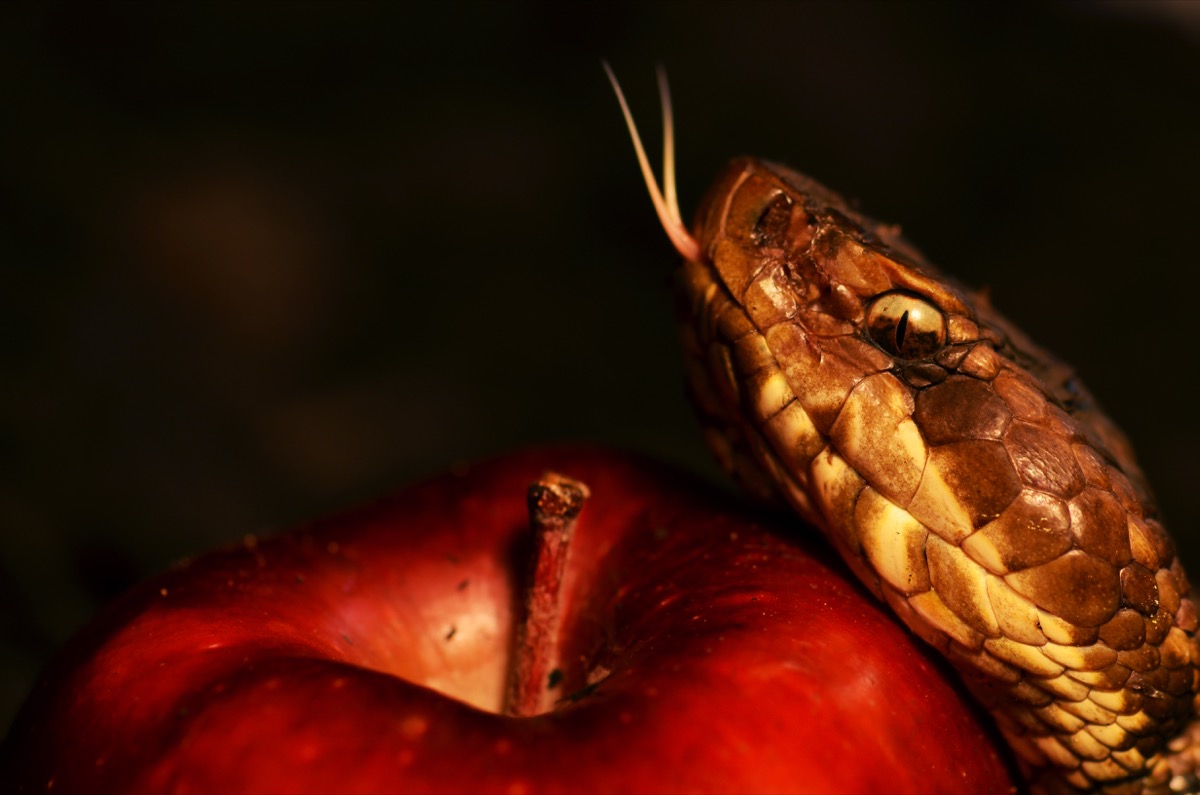
Yes, the Bible does say that Adam and Eve ate a forbidden fruit. But despite many Sunday school stories and visual representations depicting that fruit as an apple, it’s never stated in the text as such. According to NPR, the apple depiction was the result of some confusion with the Hebrew Bible being translated into Latin, using the term “malus,” which translates to both “evil” and “apple.”
21
Your hair and fingernails continue to grow after you die.
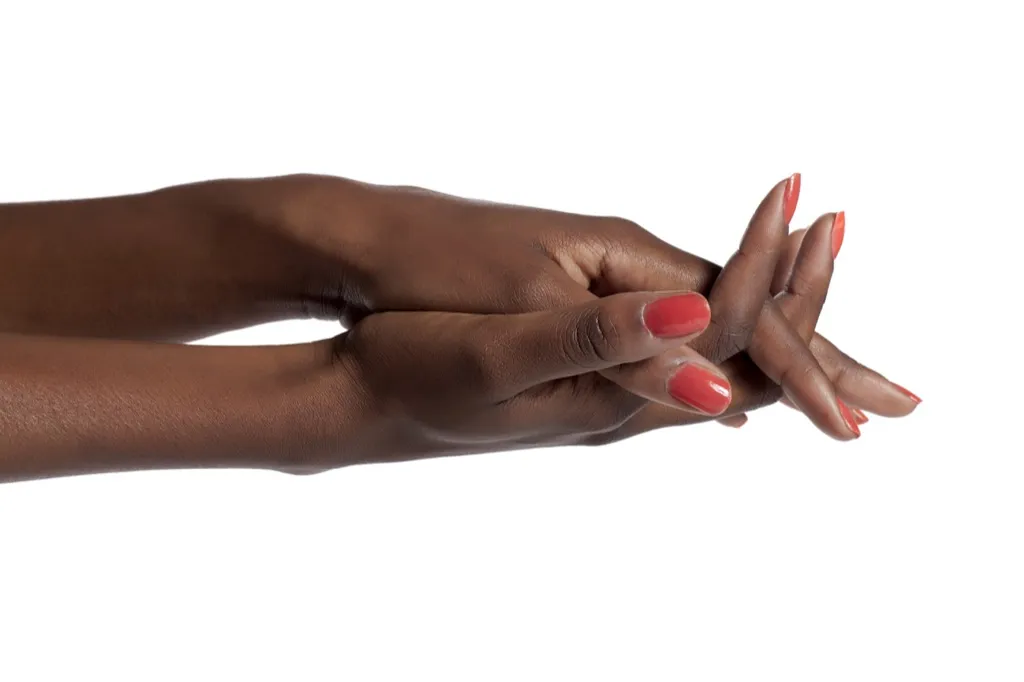
It’s true that a person’s hair and nails may appear longer after their death. But, according to the University of Arkansas for Medical Sciences, that’s only because the skin around a person nails and hair retracts over time due to dehydration of the body, not because their hair and nails are actually growing.
22
If you touch a baby bird with your bare hands, its mother will reject it.

It’s long been believed that if you were to pick up a lost baby bird and return it to its nest, its mother will reject it once she catches the scent of a human. If that sounds a little harsh, that’s because it is. It’s just another common myth, according to Scientific American. “In general, wild animals bond with their young and do not quickly abandon them,” Laura Simon of the Humane Society of the United States explained to the publication. Besides, a bird’s ability to smell is still up for debate.
23
Drinking alcohol raises your body temperature.

While you may feel warmer when you drink alcohol, that’s the booze and your brain getting together and playing tricks on the rest of your body. In reality, alcohol actually lowers your core body temperature, according to an oft-cited 2005 study published in the scientific journal Alcohol.
24
Cracking your knuckles too much will cause arthritis.

Knuckle crackers of the world can rest easy, at least on the arthritis front, because, according to Harvard Medical School, cracking your knuckles doesn’t increase your risk of developing the painful joint condition. That cracking noise actually comes from collapsing gas bubbles. However, cracking too often may weaken the strength of your grip (not to mention aggravate the nerves of the people around you).
25
Georgia produces the most peaches of any state in the U.S.

Georgia may be known as the Peach State, but it’s the Golden State that is the top producer of peaches in the U.S. According to the Agricultural Marketing Resource Center, California grew 541,000 tons of peaches in 2017. Meanwhile, Georgia wasn’t even in the top three, even though peaches are its official state fruit! (For those who are curious, New Jersey was second and Pennsylvania was third.)
26
Sugar causes hyperactivity in children.

Many parents will blame their children’s rowdy behavior on an overabundance of sugar, but there’s no actual evidence to support those claims. A definitive 1995 meta-analysis published in the Journal of the American Medical Association found that sugar in children’s diets does not affect their behavior.
27
Bats are blind.

Contrary to popular belief—and the idiom “as blind as a bat”—these nocturnal creatures can absolutely see. In fact, as Rob Mies, former executive director for the Organization for Bat Conservation, told National Geographic, bats “can see three times better than humans.” So joke’s on us!
28
Lightning never strikes twice.

You’ve probably heard someone say that “lightning never strikes twice,” but while this old adage is still used today, it’s not true—at least not scientifically. NASA debunked this myth in 2003, reporting that “lightning definitely strikes more than one place.” In fact, it does so about a third of the time!
29
Humans only have five senses.

Many of us were taught that humans have five senses: touch, taste, smell, sight, and hearing. But those are only the five basic senses. While this concept of the “five” senses originated with Aristotle, many scientists argue that humans actually have between 14 and 20 senses.
30
Shaving your hair makes it grow back thicker.
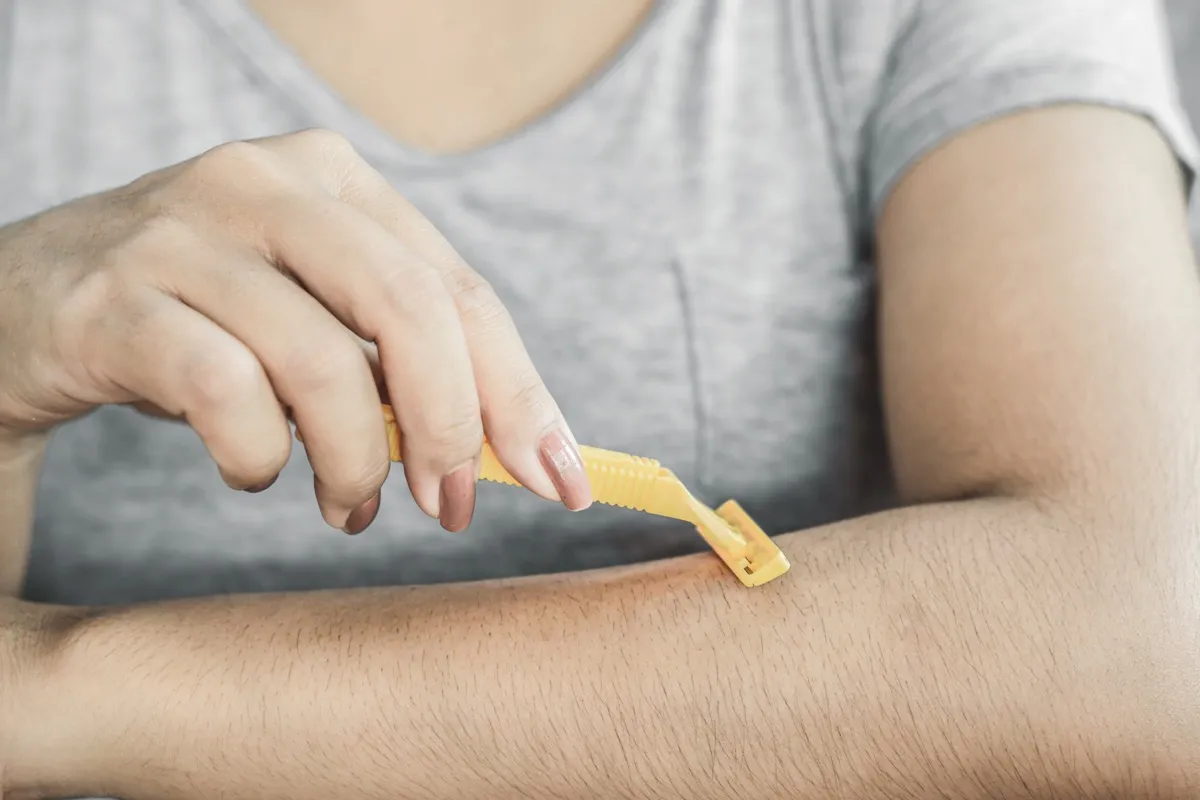
Have you ever been warned against shaving your arm hair, with the reasoning being that it would just grow back thicker? Well, you’re in luck, because we’re about to debunk that myth. Shaving your hair doesn’t make it change in color, rate of growth, or thickness, says the Mayo Clinic. All it does is give the hair a blunt tip, which might feel more coarse as it grows out. But while it may appear more noticeable or thicker during this time, it isn’t in reality.
31
Chameleons change colors to blend in with their surroundings.
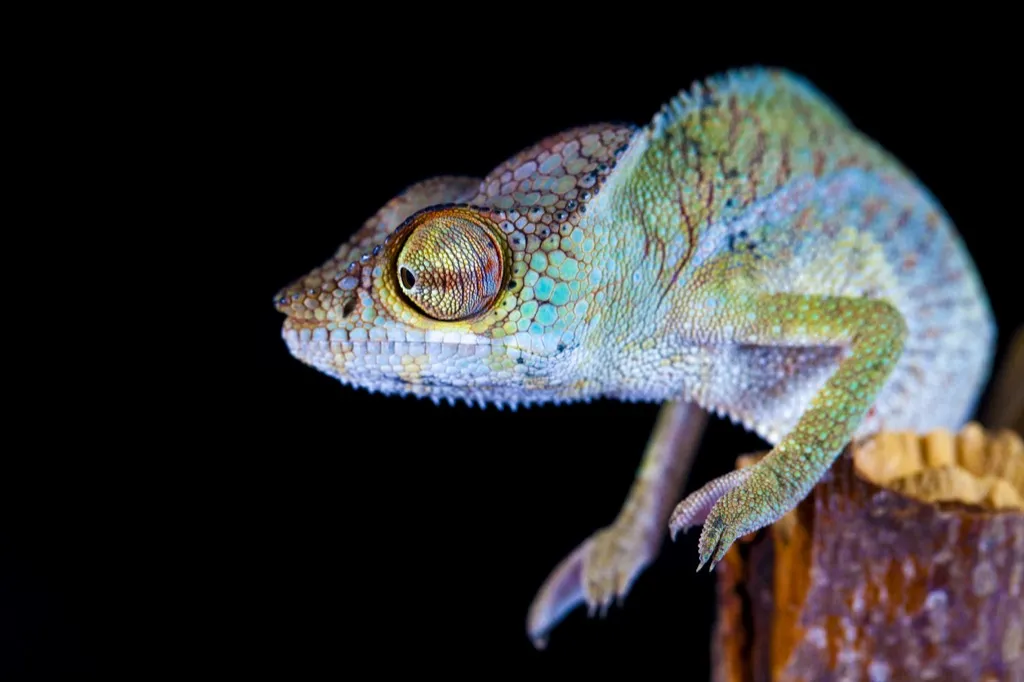
Yes, chameleons do have the ability to change colors, but the falsity here lies in why they do so. According to Wired, chameleons change colors to regulate their temperatures or communicate with other chameleons, not to camouflage themselves.
32
The Declaration of Independence was signed on July 4th.

Of course, you know that the Fourth of July is a national holiday during which Americans celebrate their country’s independence—but don’t get that confused for the actual date on which the Declaration of Independence was signed. While Congress indeed approved the final declaration on July 4, 1776, the document wasn’t signed until Aug. 2 of that year.
33
Bananas grow on trees.

We all know that money doesn’t grow on trees, but many of us believe that bananas do. Sadly, we’re mistaken again. Though they may look similar to trees, the Rainforest Alliance says that the plants bananas grow on are in fact “giant herbs related to lilies and orchids.”
34
Dogs sweat through their tongues.

Since most dogs’ tongues hang when they pant, many people think that’s how canines sweat. But, according to the American Kennel Club, dog’s merocrine sweat glands function similarly to humans’ and are located on their paw pads. They also have apocrine sweat glands, but these are located all over the body, not solely on their tongues. The reason why dogs pant is to evaporate moisture from their tongues, nasal passages, and the lining of their lungs, which does help to cool them down.
35
It’s safe to eat food that’s been on the floor for five seconds or less.

Don’t adhere to the five-second rule and take your chances with food that’s fallen on the floor. When researchers at Clemson University left bologna and bread on a surface contaminated with salmonella in a 2017 study, they found that “a substantial amount of bacteria transferred to the food within five seconds.”
36
All deserts are hot.

Deserts are not defined by their temperatures, but by their lack of precipitation. And while most of the world’s most famous deserts are indeed hot, there are some deserts that also experience brutal cold. Known as polar deserts, these arid areas can be found in Iran (called Dasht-e Lut) and Northern Greenland, for example.
37
Fortune cookies originated in China.

Today, you’re likely to receive a fortune cookie—stuffed with a proverb and some lucky numbers—at the end of every meal at a Chinese restaurant in the U.S. But the National Museum of American History points out that the creator of the fortune cookie was Suyeichi Okamura, a Japanese immigrant who ran a confectionary store in Northern California during the early 1900s. When Japanese Americans were sent to internment camps during World War II, Chinese Americans took over the fortune cookie industry, and that’s why you see so many of these treats in Chinese restaurants today.
38
The sun is yellow.

According to the Stanford Solar Center, “it is a common misconception that the sun is yellow or orange or even red.” In reality, “the sun is essentially all colors mixed together, which appear to our eyes as white.” The reason we see the sun as yellow or orange most of the time is because those colored wavelengths, which are longer, are the only ones that make it to our eyes. The other short-wavelength colors—green, blue, and violet—become scattered by the atmosphere, which is what makes the sky look blue during the day!
39
Cinco de Mayo is Mexico’s independence day.
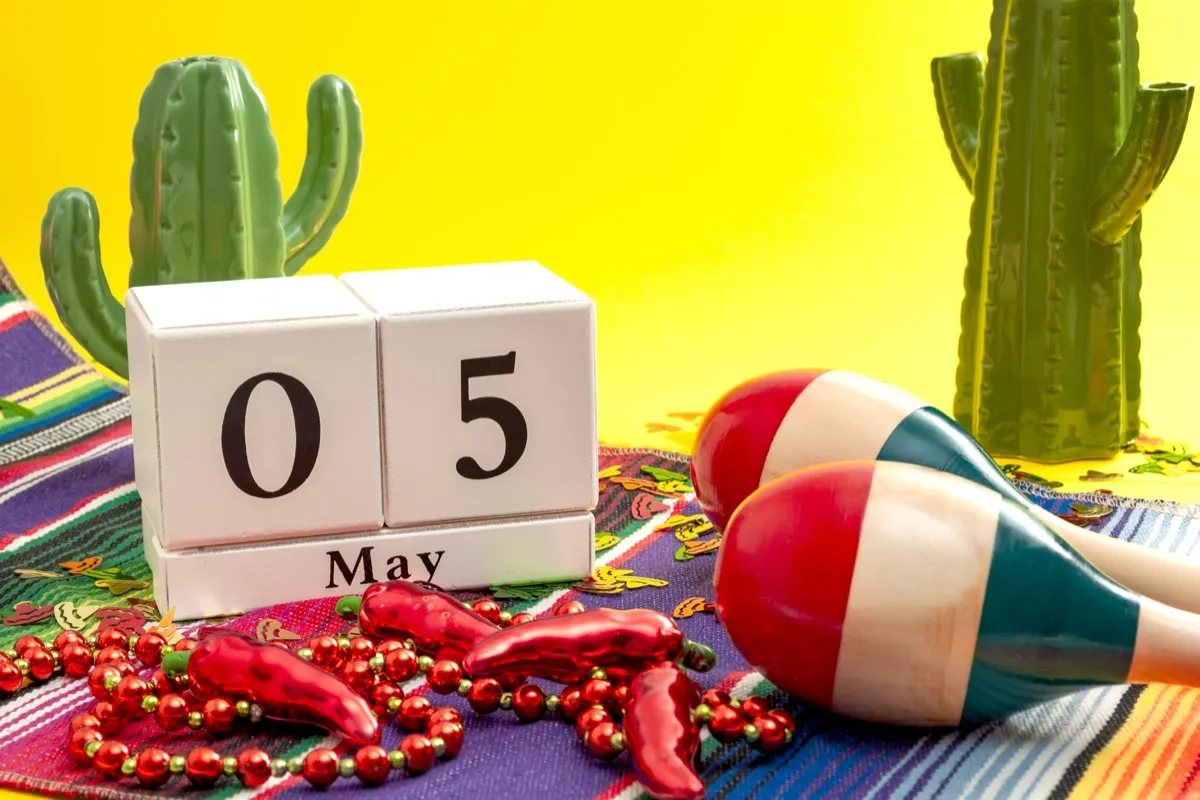
The Cinco de Mayo revelry has nothing to do with Mexican independence, but rather celebrates a military win. On May 5, 1862, the Mexican army successfully defeated France at the Battle of Puebla during the Franco-Mexican War. Though the country’s victory was short-lived, people all around the globe partake in celebrations commemorating this battle each year with fireworks and fiestas.
40
You should urinate on someone if they get stung by a jellyfish.
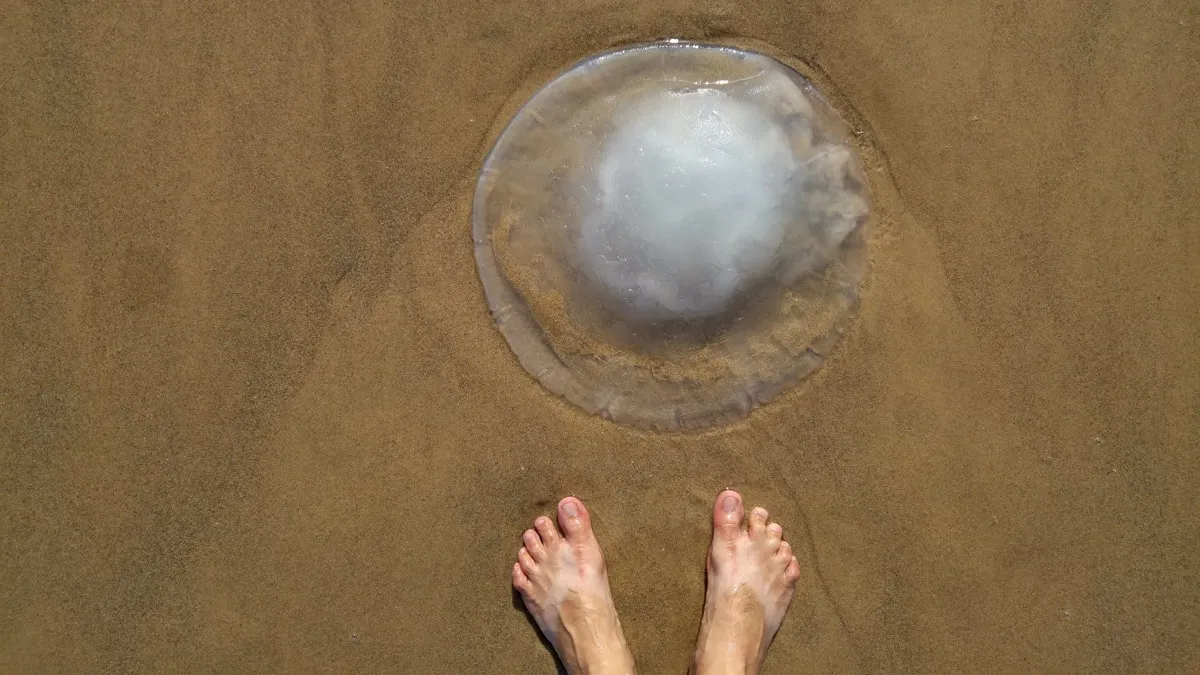
Here’s one “fact” you’re probably relieved to hear is fiction. According to the Cleveland Clinic, the proper way to treat a jellyfish sting is with hot water. Not only is urine not an effective treatment method, but it can even worsen the sting!
41
President Richard Nixon was successfully impeached.

He probably would have been, but it never came to that. Official impeachment hearings against Richard Nixon began in May 1974, but the 37th president announced his resignation on Aug. 8 before anyone could successfully force him out of office.
42
Brown eggs are more nutritious than white eggs.

Brown eggs are no healthier than white eggs. The color of an egg’s shell is simply determined by the type of chicken laying them. And here’s a fun fact: Chickens with white earlobes typically lay white eggs!
43
Going outside with wet hair makes you sick.

Stepping outside in sub-zero temperatures right after you wash your hair might make you chilly—and it might cause your hair to freeze—but it won’t get you sick. Colds are caused by a virus, and they don’t care whether your hair is wet or dry. “You cannot catch a cold or the flu simply from going out with wet hair during winter,” Anita Skariah, DO, a physician who specializes in internal medicine and pediatrics at UNC Healthcare, told Bustle. “Some wives’ tales are valid conclusions from observations people have made through the years, but this one has not been proven conclusively.”
44
Peanuts are a type of nut.

Despite the misleading name, peanuts are actually a type of legume. Though they’re commonly served with nuts like walnuts and almonds, they are more closely related to clovers and chickpeas.
45
Twinkies have no expiration date.

Sorry, but Twinkies aren’t going to fend off hunger during a zombie apocalypse. As Theresa Cogswell, former vice president for research and development at Interstate Bakeries Corp. (and a self-proclaimed Twinkie fanatic), told The Washington Post, the sweet snack only has a shelf life of 25 days. While still a long time as far as pastries are concerned, it’s unlikely that your Twinkie stash will make it through a nuclear winter.
46
There is one universal sign language.

Sign language is a manual form of communication, and there are variations depending on the country and region you’re in, just like any other language. In the U.S., for instance, you’ll find American Sign Language (ASL), which uses a one-handed finger-spelling alphabet, whereas British Sign Language (BSL) in the U.K. is a different language altogether that uses a two-handed alphabet. And the differences only go on from there!
47
Sugar causes headaches.

It’s not the sugar itself that’s causing your headache; it’s a rapid drop in your blood sugar levels that wreaks havoc on your head. For some people, eating a carbohydrate-heavy meal causes excess production of the sugar-regulating hormone insulin, which in turn makes glucose levels drop and results in that throbbing headache you so often experience after consuming one too many cupcakes.
48
Putting your laptop on your lap will cause infertility.

This myth gained traction in 2011 when Argentinian researchers published a study in the journal Fertility and Sterility claiming that the radiation emanating from laptops could affect sperm production. However, other scientists were quick to debunk the findings.
49
The odds are always 50-50 in a coin toss.
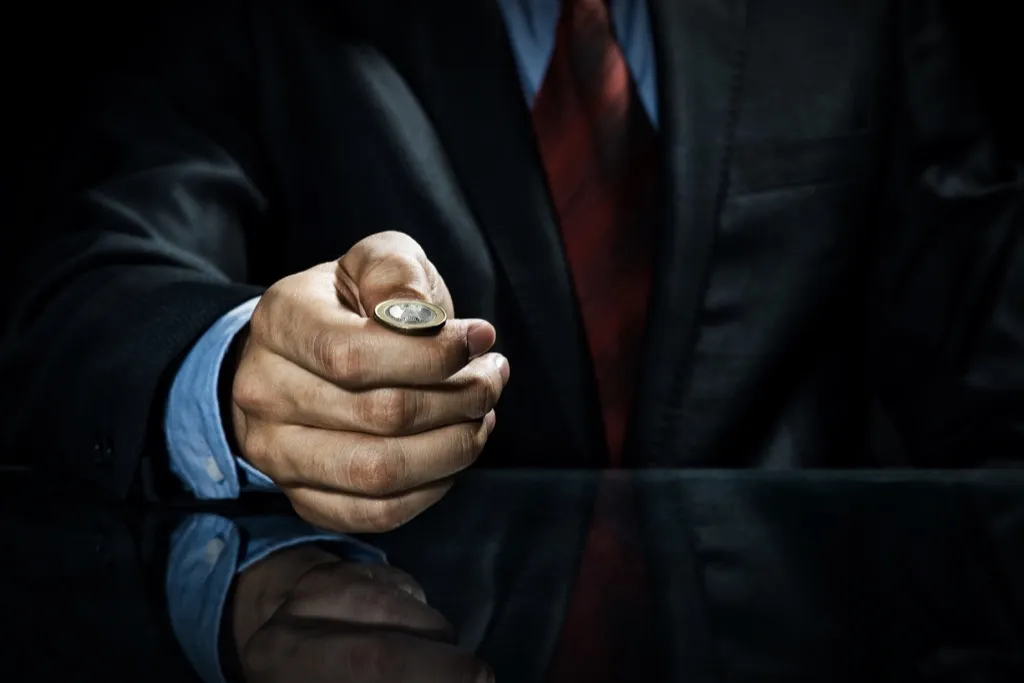
A group of Stanford University researchers proved this common misconception wrong in 2007 when they flipped a lot of quarters and found that a coin was more likely to land on the face that it started on. The researchers put your actual odds at closer to 51-49, so pay attention to which side of the coin faces the sky when you make your call!
50
Every living thing dies.

While yes, most living things do die eventually, there is one species of jellyfish that doesn’t technically perish. Known as the Turritopsis dohrnii, this essentially immortal sea creature reverts back into a juvenile state after adulthood—so it can live out yet another life alongside its offspring!